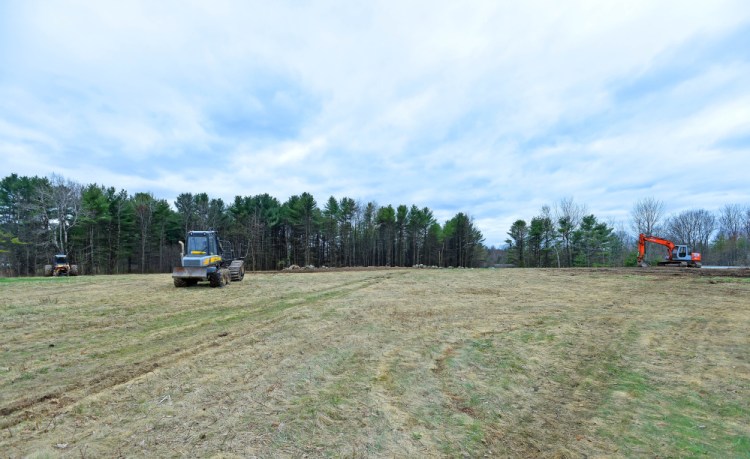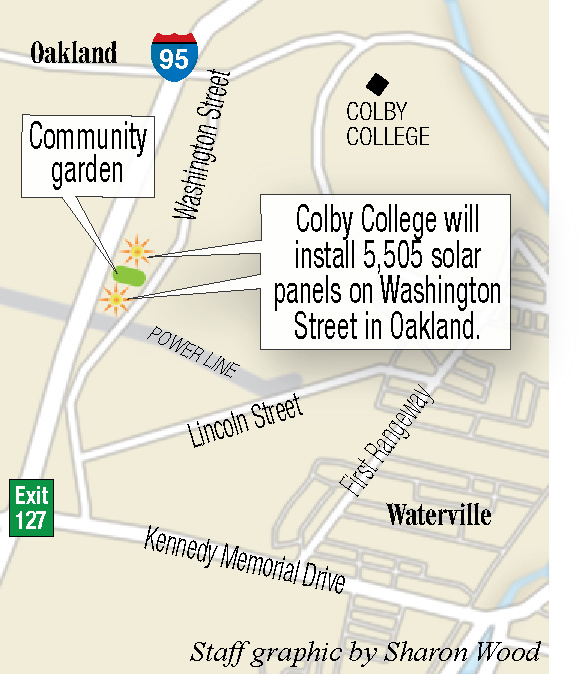OAKLAND — Colby College is expecting to have its array of 5,505 solar panels installed and running along Washington Street by January 2017.
The Planning Board approved 5-0 a site application from Stephen Mohr of Mohr & Seredin Landscape Architects, Inc. at its meeting on Tuesday.
Board member Bob Knowlton recused himself from the decision, as he helped Colby College with land surveying.
Board member Shawn Stevens abstained from the vote.
Mohr is working with NRG Energy, Inc., a solar energy company based in New Jersey and Texas, and Colby College on installing the solar array.
Colby College has been talking about a photovoltaics, or PV, installation for three or four years, Mohr said, and this project will complement the college’s energy plan.
Colby’s trustees have entered into an agreement to lease NRG 12.7 acres of the 26 it owns on Washington Street for 27 years for the arrays of PV panels. The college will tap into the system and will be able to cover 16 percent of its energy consumption with the 2.5 million kilowatt hours of electricity the solar power will generate.
The state is currently processing a permit for the site to be developed.
Mohr presented an overview of the project and how it will affect the road, passersby and a nearby residence.
The site was chosen because it is only minimally noticeable from Washington Street, as the land slopes upward. The project will be set back 100 feet from a nearby stream and 25 feet from a wetlands area.
The project also provides a number of buffers to collect runoff, which will be inspected annually, Mohr said.
The edge of the array is about 18 feet away from the residence of John and Deborah Pooler, who were present at the meeting on Tuesday.
Deborah Pooler said she felt “confident” in the project and that it seemed “well thought out.”
Mohr also conducted a noise study, as the inverters do “hum,” he said. He found that they create 45 to 55 decibels. Sixty feet away from them it drops to 20-25, so Mohr said the residents shouldn’t hear them. The background noise from a truck on the highway is about 80 to 90 decibels. The inverters also won’t run at night, so they won’t make noise then.
The fire chief also had some concerns, which Mohr said they will look into. The application was approved on the condition that the access road around the arrays is widened from 12 feet to the width the chief requests for firetrucks and on the condition that fire safety training for PV panels is provided to the fire department.
The largest concern with fire safety, Mohr said, is that firefighters can get electrocuted if a fire starts near a PV panel, as it will stay on and generate energy. Dry foam is the best way to fight fires near solar energy arrays.
The panels will be connected to the college underground.
Mohr said they are expecting the Department of Environmental Protection to issue a permit around Aug. 15, at which time NRG will begin construction of the arrays.
The goal is to get the ballasts and stations in by October and the equipment in place by mid-November. A crew in California was able to build 2 acres of arrays per day, Mohr said.
The system should be up and running by early January.
Send questions/comments to the editors.





Comments are no longer available on this story